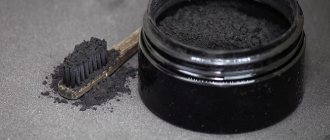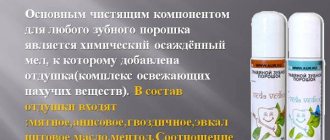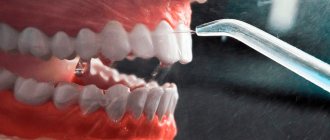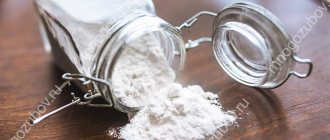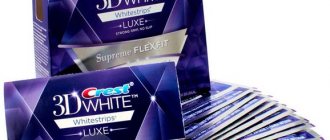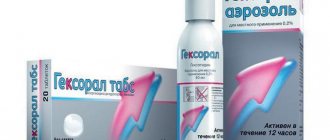Baking soda is a great helper in the kitchen. Not only will it make your baking better, but it will also help clean serious stains on the stove and pan. Of course, its beneficial properties do not end there. But they end where people start using baking soda to whiten teeth enamel. Is it possible to whiten teeth with baking soda, you ask? Of course not, any professional dentist will answer you, and he will be absolutely right. This great product is versatile, but should not be used for oral hygiene. Of course, many on the Internet can write flattering reviews about soda, saying that their teeth have become incredibly white and beautiful. But you just have to scroll through the reviews below and find angry comments from those who ruined tooth enamel with soda! Of course, it does give a lightening effect, but it is not only short-lived, but also very harmful. Long-term use of this cleaning method can lead to serious consequences, which, as you understand, are not needed by anyone. Of course, using it once every ten to twenty days is completely normal, and you won’t even feel the negative effect, but if you increase it a little more often, the side effects won’t take long to appear.
How does baking soda affect teeth?
Soda is a good and inexpensive disinfectant. Even now, doctors recommend using it in dental treatment of infants who are diagnosed with stomatitis or oral thrush.
Soda kills fungus and promotes rapid healing of ulcers on the mucous membrane that appear as a result of stomatitis due to its high regenerative properties. In addition, sodium bicarbonate has a pronounced anti-inflammatory effect. Dentists often prescribe rinses or baths with soda or soda-saline solution for purulent periodontitis and pulpitis, after opening the cavity of the affected tooth.
In America, clinical observations of the oral health of patients using soda pastes for brushing their teeth and microbiological analyzes of the contents from the oral cavity of these patients showed that the concentration of pathogenic microorganisms is significantly reduced.
Whitening effect of brushing teeth with baking soda
As for hard tooth tissues, soda has a good whitening effect . The enamel is lightened by at least 0.5 shades, which can be compared with professional oral hygiene. This happens thanks to abrasive particles that efficiently clean the tooth surface from dental plaque and food debris. Conventionally, you can compare brushing your teeth with soda to cleaning various surfaces with sandpaper.
American scientists even conducted a study in 2008 that showed that pastes based on baking soda are much better at removing dental plaque than pastes with a soda-free composition or a low concentration.
It is necessary to take into account the fact that soda is a pure abrasive. Abrasive particles are found in many toothpastes, especially whitening ones. Dentists do not recommend using whitening toothpastes for longer than 2 weeks, because... abrasive particles can thin the enamel layer of the tooth, leading to hypersensitivity. For this reason, pure abrasive in the form of baking soda definitely cannot be used often . Dentists also do not recommend using soda in dry, undiluted form.
You also need to pay attention to the pH of the soda. It is equal to 8, which is typical for an alkaline environment. Many people are afraid of this indicator, but it is only dangerous for the protective barrier of the skin, which is manifested by redness around the mouth if soda pastes act on the skin for a long time. For the oral cavity, an alkaline environment, on the contrary, is positive, because it neutralizes acidity. It is high acidity that contributes to the destruction of hydroxyapatites in the enamel, which act as a kind of skeleton, thereby disrupting the structure of hard tissues and provoking the development of caries and its complications in the future.
Soda teeth whitening:
The benefits and harms of cleaning
Only baking soda is suitable for teeth!
The advantages of sodium bicarbonate pastes include:
- Achieving a positive result quickly, the enamel becomes lighter after the first procedure.
- Easy to prepare pasta and use it.
- Removal of all dental plaque.
- Low cost.
- Relief of unpleasant odor from the oral cavity.
- Relief of inflammatory processes in the oral cavity.
- Accelerated healing of wounds in the mouth.
- Neutralization of acidity in the mouth.
- Destruction of pathogenic microorganisms and fungi of the genus Candida that cause candidiasis (thrush).
There are also disadvantages :
- High abrasive properties. Frequent use of soda contributes to the thinning of the enamel layer and the development of the carious process in the future.
- Irritating effect on soft tissues in the form of red spots or rashes around the mouth.
- Risk of developing bleeding gums.
- The appearance of sensitivity to hot, cold and sour with frequent use of the soda bleaching procedure.
- The short duration of the achieved result.
Important! To prevent the development of these shortcomings, it is not recommended to use products with sodium bicarbonate more than once every 3-4 weeks.
Indications for using soda
Soda must be used when the enamel darkens due to plaque formation
The main indication for using soda pastes when brushing teeth is darkening of the enamel.
The following factors contribute to darkening:
- Consumption of foods and drinks with food colorings.
- Smoking.
- Age.
- Poor oral hygiene.
Baking soda can combat these reasons.
But there are reasons that can only be eliminated by professional, internal tooth whitening. These include:
- Tooth injury.
- Consequences of endodontic treatment.
- Taking certain medications.
- Genetics.
In these cases, the darkening of the enamel begins from the inside, and superficial whitening methods will not give even minimal results.
Video experiment to identify the effect of soda and salt on teeth:
Beneficial properties of lemon
This bright citrus is extremely healthy. It contains a large amount of vitamin C and various microelements. Lemon strengthens the immune system, helps fight viral diseases, and saturates the body with vitamins. Due to its healing properties, the yellow fruit is successfully used in folk medicine. In addition, it has found application in cosmetology. The acids contained in its composition perfectly lighten the skin and nails. Lemon can also be used to whiten teeth. The active substances of citrus are able to return tooth enamel to its natural color in a short time. Lemon has the following effects:
- refreshes the oral cavity;
- removes plaque, returning the tooth covering to its natural whiteness;
- helps eliminate toothache;
- kills pathogenic microbes living in the mouth.
Anyone can try this home remedy. However, it is necessary to take into account that there is no allergy to citrus fruits. The condition of tooth enamel also matters. If it is damaged or too sensitive, it is not advisable to use acid for bleaching.
Lemon is a citrus that has a wide range of uses in our lives. It has an antibacterial effect, and due to its natural acid it is considered a good remedy for natural teeth whitening.
Rules of application
To achieve white teeth without damaging the enamel layer of the tooth, you need to use sodium bicarbonate a maximum of once a month. In this case, you need to use it mixed with water, the consistency should be mushy. You can use any other solvent.
Attention! Do not use dry soda under any circumstances; it can leave scratches on the enamel layer.
This is what the paste should look like
In addition, dry soda powder feels like sand in the mouth, which causes discomfort. It is better to use the product in diluted form, mixing it with toothpaste or other substance.
There are several proven recipes for preparing homemade soda pastes and solutions, which will be discussed below.
The method of brushing your teeth can be standard, but it is better to use circular movements of the brush. This will not only clean the tooth surfaces, but also massage the gums, improving tissue trophism.
Flaws
It is worth noting that soda also has its disadvantages, which, of course, you need to pay attention to so as not to spoil your teeth.
- The result, unfortunately, is short-lived. Within a few days, the teeth will begin to darken again.
- Baking soda acts as an abrasive, which means it can harm enamel.
- If you have sensitive gums, the powder may cause irritation. Also, it should not be used if there are wounds on the mucous membrane.
- Since the product damages the enamel, the teeth may become sensitive, which means they will subsequently react to too cold and hot foods.
Is it possible to brush your teeth with baking soda every day?
Dentists have a negative attitude towards any abrasive products, therefore, from a professional point of view, daily brushing of teeth with soda is prohibited. It was already mentioned above that daily use leads to destructive processes in tooth tissue, but people still strive to achieve positive dynamics and consolidate this result for a long time.
Carefully! It is impossible to achieve a lasting result with whitening soda. Excessive efforts will lead to other dental problems that cannot be treated at home.
The effect after brushing teeth with soda does not last long, which explains the desire of patients to use this method of hygiene more often. However, daily use thins the enamel more and more. Dentin, which is much darker, begins to appear through the thin enamel layer.
As a result, the teeth become even darker than they were before and it will no longer be possible to achieve lightening at home. In addition, thin enamel easily allows waste products of pathogenic microflora, which are the source of the development of most dental diseases, to pass through it.
Dentist on brushing teeth with soda:
Is it possible to brush your child's teeth with baking soda?
It is better not to brush teeth with a milk bite with soda. There are several reasons for this:
- The enamel is already white and does not need bleaching.
- The enamel is not fully formed and is very porous, which can contribute to its rapid destruction.
Rules for the procedure
Due to its high acid content, lemon effectively cleanses enamel, dissolving and removing dark plaque. Citrus can be used in different ways. For the procedure, you can take only the lemon peel, its juice, or the entire fruit. The main thing is to choose a method of application that will not cause discomfort to the teeth. Let's look at a few simple recipes for lightening tooth enamel.
- Remove the peel from the lemon and rub the inside of your teeth well. Sit for a few minutes while the acid takes effect, keeping your mouth open to prevent saliva from washing away the juice. Then rinse your mouth with water.
- Cut the lemon into small slices and apply them to your teeth for a few minutes.
Be sure to rinse your mouth after use. This method is more effective, but it cannot be used if the teeth are sensitive. Attention! The sour taste of citrus can irritate the mucous membranes, so keeping lemon slices in your mouth for a long time is not recommended. - Instead of applying lemon slices to your tooth enamel, you can simply chew them for a few minutes. The advantage of this method is that the acid can reach even the most inaccessible places. However, people with sensitive teeth will find this procedure unpleasant.
- There is another permanent method of whitening. During your morning brushing, add a few drops of lemon juice to your toothpaste.
- The most gentle way to lighten enamel is to rinse with lemon juice. To do this, dilute the juice with water in a 1:1 ratio and rinse your mouth after brushing in the morning or evening. Use this rinse for no more than 5-6 days in a row.
Lemon is indeed a very beneficial fruit in teeth whitening. But it must be used very carefully to avoid the unwanted effects of increased sensitivity and tooth damage from citric acid.
How to brush your teeth with soda
Before you start brushing your teeth with soda, you need to be completely sure that:
- The enamel is of sufficient thickness.
- The enamel is free of microcracks.
- There is no hypersensitivity.
- Darkening of the enamel layer is not associated with genetic factors, injury or medications.
Personal hygiene products used to clean dental surfaces with soda pastes:
- A toothbrush with soft bristles (some dentists recommend not using a brush at all, but replacing it with a bandage, a cotton swab, or simply using your index finger to brush).
- Toothpaste (non-whitening), water, lemon juice or hydrogen peroxide.
Cleaning technique:
- Combine baking soda with one of the ingredients: water, toothpaste or lemon juice until it becomes mushy.
- Place the mixture on the head of your toothbrush.
- Clean dental surfaces using circular movements, without much force.
- Duration of cleaning is up to 3 minutes (if water or toothpaste is used as a solvent), no more than 1 minute (if the solvent is lemon juice or hydrogen peroxide).
- Rinse your mouth vigorously with running water or a mint or herbal mouthwash to remove the unpleasant aftertaste.
Recipe options
The most popular recipes using soda are:
| Soda with lemon juice | There are recipes for paste and solution. To prepare the paste, you need to combine a teaspoon of sodium bicarbonate with the juice squeezed from fresh lemon. Add juice drop by drop until a paste consistency is reached. The paste copes with plaque much better than the solution. The rinsing method lightens the enamel slightly. To do this, the juice of one lemon is mixed with a teaspoon of baking soda. |
| Soda with toothpaste | To prepare the composition, you need to use equal amounts of toothpaste and soda, and the toothpaste should contain fluorides, which strengthen the enamel, and potassium nitrate, which reduces sensitivity. |
| Baking soda and hydrogen peroxide | To prepare the paste, you need to take 1 teaspoon of baking soda and ½ teaspoon of peroxide. |
Video about teeth whitening with baking soda and peroxide:
Homemade pastes with soda
- If there is a large amount of plaque covering more than half of the dental crowns, you can prepare a powerful paste. It consists of hydrogen peroxide, soda, salt and industrial toothpaste in equal parts.
Soda
Salt
Toothpaste
- If inflammation of the soft tissues of the oral cavity occurs frequently , you can use a homemade eucalyptus-based paste. The ingredients include warm olive oil (2 teaspoons), finely chopped and grated eucalyptus leaves (1 teaspoon), baking soda (1 teaspoon) and a teaspoon of fine salt.
Olive oil
Eucalyptus leaves Soda Salt
- If you are prone to developing tartar, you can prepare a paste with more aggressive abrasive particles. To prepare you will need 20 grams of soda, 45 grams of chalk, 50 grams of white clay and peppermint essential oil (10 drops).
Soda
Chalk
White clay
Peppermint essential oil
Advantages
First of all, you need to understand what benefits soda has.
- Product availability. It can be purchased at any grocery store. The price is low, everyone can afford such a purchase.
- Visible result. You will be able to see how the color of your teeth changes after just one application. Even with the most expensive toothpastes, you will not be able to achieve such quick results.
- Safety of use. You don’t have to worry about poisoning or an allergic reaction.
Effect
The result of using a homemade paste based on sodium bicarbonate is noticeable after the first cleaning. The enamel is lightened by at least 0.5 tones. At the same time, soda can cope not only with soft plaque.
Before and after teeth whitening with baking soda
The paste also effectively removes pigmented plaque and tartar. However, the effect is short-lived . The enamel returns to its original shade after 2 – 3 days.
Video review of brushing teeth with soda:
How to minimize damage to enamel
You can brush your teeth with baking soda using your finger.
To reduce the risk of enamel damage, you should adhere to the following recommendations :
- Brush your teeth with baking soda no more than once a month.
- Use a soft-bristled toothbrush for cleaning, or better yet, a cotton swab, gauze, or simply brush your teeth with your finger.
- On other days, it is better to perform oral hygiene with therapeutic and prophylactic pastes containing useful minerals.
- If even a slight sensitivity appears from the procedure of brushing teeth with soda, it is better to refuse altogether.
conclusions
If you use baking soda not fanatically, then there will be no harm from it. But as you can see, there are many factors to consider here. In any case, it is recommended to first consult with your dentist, who will conduct an examination. It may turn out that your enamel will not survive such exposure, which means that it will quickly deplete and you will develop caries.
Teeth require very careful care if you want to maintain their health and attractive appearance for a long time. Choose only those products that suit you. Whether it is possible to brush your teeth with one or another means is a very difficult question, since it requires an individual approach.
Category Hygiene Published by Mister stomatolog
